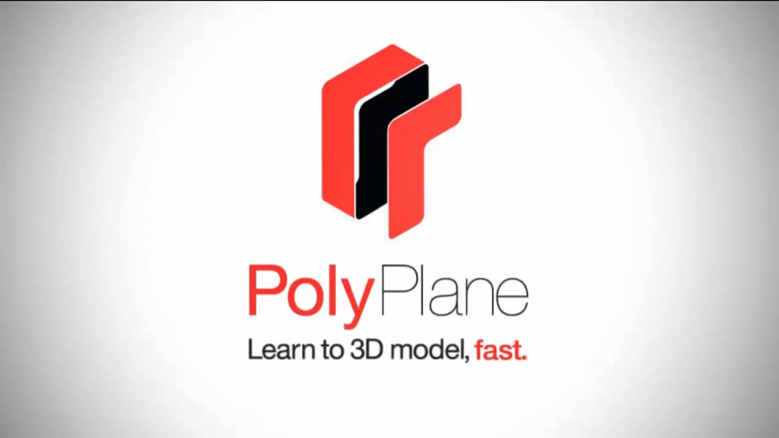Interview with Maxwell Render expert James Coleman

James Coleman has become a popular name in the Maxwell Render community, especially due to his weekly instructional Youtube videos, as well as his work at the University of Brighton. I first contacted James a few months ago when I was getting back into Maxwell Render, and his tips & tricks have been exceedingly helpful to streamline the production process. I thought it was a great time to pick his brains, as the exciting release of Version 3 is just around the corner.
London 2012 Olympic Kodak Brownie project by James Coleman
Maxwell Render is a physically correct, unbiased rendering engine, meaning that it calculates complex light interactions, making it capable of simulating light exactly as in the real world. It doesn’t use tricks to simulate real world behavior like other renderers, everything is reproduced as it is through governing physical equations. A great advantage of the software is that it is cross-platform and has plugins for many 3D applications, including 3DS Max, Maya, Sketchup, ArchiCAD, Revit, Rhino and more.
Examples of Maxwell Render from the Gallery
Maxwell Render is great for for 3D visualizations in design and architecture, as well as film, animation and VFX. I really enjoyed Ronen Bekerman’s Maxwell Render Museum Challenge where designers created some stunning masterpieces to adorn Mies van der Rohe’s “Neue Nationalgalerie” (you can still download the 3D model here )
Ronen Bekerman’s Maxwell Render Museum Challenge winners
Hi James, please tell us a bit about yourself, and how you initially became interested in 3D Visualization?
Hello everyone, my name’s James Coleman and I’m a Product Design graduate from the University of Brighton! Those should be familiar words to my YouTube subscribers! And it was during my time at the University of Brighton that I realised my penchant for CAD, and particularly for 3D visualisation. When I started I had no idea where my skill level was in comparison to other students, but fiddling with SketchUp and later Cinema 4D in the months leading up to uni had given me a great head start in 3D, and learning the product design course software (SolidWorks and Rhino) was easy. 3D/CAD quickly became a particular interest of mine, and especially realism, which led me to where I am today.
Yes your Hot Tips on Youtube have been very well received and are extremely helpful! As they exponentially increase in popularity, do you plan on continuing the series with the release of the upcoming version 3?
I would love to continue the series with Maxwell V3, and I’m always interested in working closer with Next Limit, so fingers crossed I will be doing some V3 tutorials! (It would also be the perfect excuse to upgrade my computer to the latest OS.)
What do you think of Maxwell Render’s place in the 3D Viz field, in relation to other powerful renderers such as Vray, Mental Ray or Octane? Do you think in its current form it’s suitable for Architectural Visualization?
There’s always been a lot of competition, but at the moment one of the reasons Maxwell still stands out to me is that it doesn’t use any GPU acceleration. For example, I can’t even try Octane because I don’t have an NVidia graphics card. Maxwell also scales linearly with CPUs, multi-threads seamlessly, and has a brilliant network rendering system, so you always get the most out of your computer(s). Maxwell’s definitely one of the best render engines available for arch vis, in fact it’s what I find it’s used for most of the time, and Maxwell scales really well so it can also be used for automotive, product and jewellery renders without any problems. In my experience, users always agree that to get the results comparable to Maxwell with any other render engine, you would be waiting a lot longer.
What hardware & other software do you usually use? Can you share some photos of your studio / work environment?
I use an Mid-2010 8-core Mac Pro, (twin Xeon E5620 2.4Ghz), and the only other piece of hardware I would deem essential is my Dell Ultrasharp U2311h. For modelling I currently use Cinema 4D, but would recommend SolidWorks or Rhino for product design. The list of other software that I use from time to time is pretty long, and it’s nothing special (Photoshop for post work, Screenflow for video recording, etc). My studio at the moment is also my bedroom, so I can’t really share any pictures!
No problem. So, what is your favorite project / render you have done?
Probably my favourite project is one of my first, my London 2012 Olympic Kodak Brownie project : it was my first project to get international recognition, mainly thanks to Yanko Design and it was the first time I realised how much my colleagues appreciated my render skills. Other than that, I like to make fractal, L-system and geometric renders, in particular “Cluster” renders which I think are a fairly unique and original style.
Yes, very impressive work indeed. Are you a post work or pure render type of artist? How much, if any, post work is involved in your creations?
I try and minimise the amount of post work I have to do. All of my textures and reflections are done in-render. But I will always add some contrast and maybe colour balance in post. Obviously the more important the render the more time I’ll give it. All post work is Photoshop, and Alien Skin Exposure is my favourite plug-in for “character”.
What would you suggest to someone wanting to become part of the industry? What are the essential skills to focus on when one is starting out?
After only a short time in this industry, I know that specialising in one particular area is the easiest way to get noticed. It can take a long time to discover what your particular skill and interest is, but once you’ve identified what you really enjoy doing and you could do for hours on end without getting bored, that’s what you should immerse yourself in. Finding the right software to work with is essential as well, so get lots of demos and stay with whatever you find most comfortable.
How do you see CGI technology developing in the coming years?
I think aspects from the video game industry are going to slowly leak into ours. Video games have a much bigger audience than 3D/CAD and create a huge amount of revenue. Imagine a game engine so good that it could act as a render engine for you, and you could show any angle of an object in any lighting setups instantly. That’s the way render engines are going at the moment, game engines are practically already there. And imagine using an Oculus Rift to look around a building before it was constructed...
That being said, because 3D viewing in general still hasn’t really been an accepted part of the industry, I think the main improvements will be speed, ease of use and specialism. How renders are displayed in the future will also have a big impact in how they are created. Will they be handed around on tablets or displayed on 85 inch 4K screens?
Architect - Tech Writer - 3D Artist - 3D printing enthusiast














